| Vintage Pulp | Feb 22 2023 |

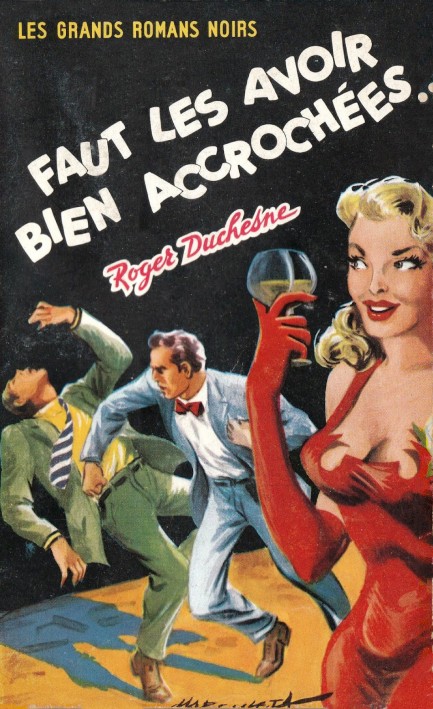
| Vintage Pulp | Jun 8 2022 |

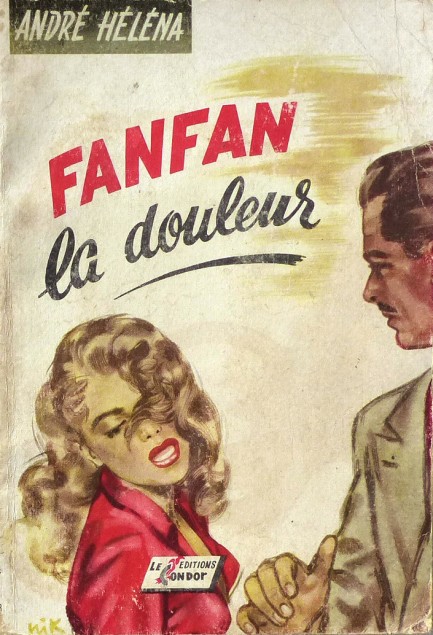
Above: a well worn cover for André Héléna's Fanfan la douleur, for Éditions le Trotteur's Condor collection, 1953. The art is by Jacques Thibésart, aka Nik, and it caught our eye because it seems to have been inspired by the famous promo image from Gilda of Glenn Ford losing his temper and slapping Rita Hayworth. At least we think so. If that's the case Thibésart wasn't going for an exact duplicate, but it feels about the same. You can check for yourself at our collection of Hollywood stars—including men on men, women on men, and women on women—slapping each other. It's fourth in the set.
| Vintage Pulp | Feb 11 2021 |

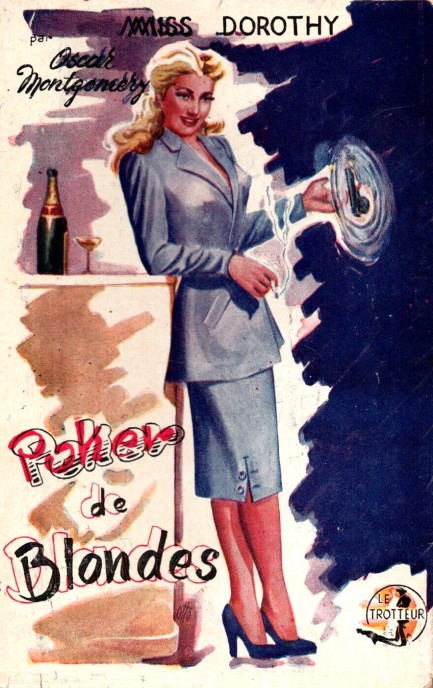
This spinning on a finger trick is definitely not recommended if you want to pass your gun safety course, but you'd certainly be the envy of your friends—the ones you didn't accidentally shoot. You can be sure Miss Dorothy had this trick perfected, since she was a franchise character who appeared in three novels by Oscar Montgomery, aka José del Valle, in 1952 and 1953. Poker de blondes is the second entry, the first is here, and the third will follow at some point.
| Vintage Pulp | Jan 5 2021 |

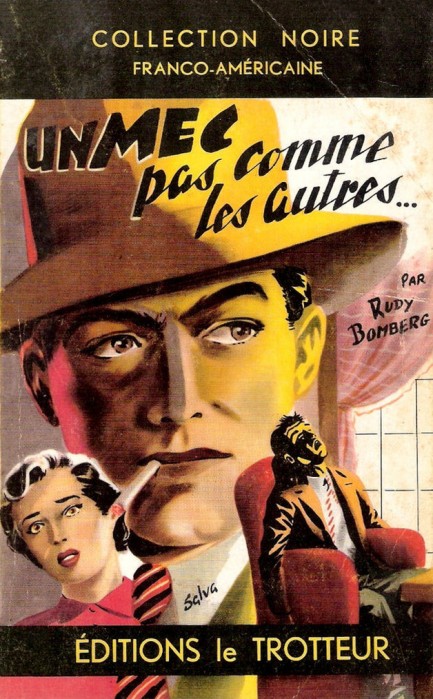
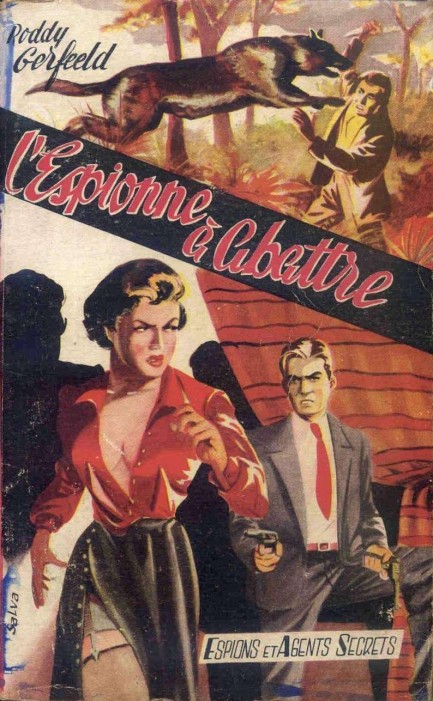
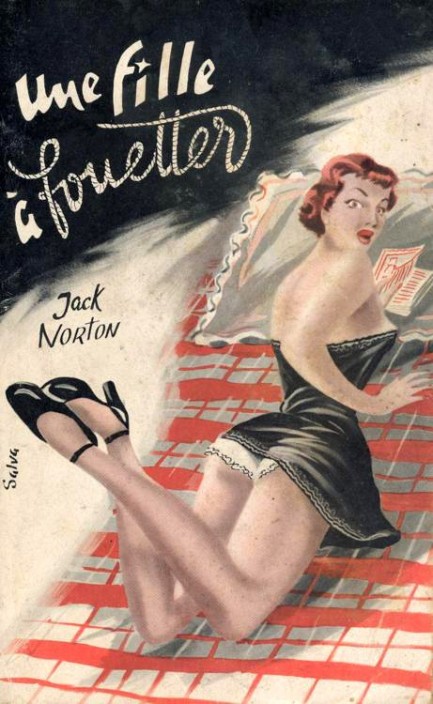
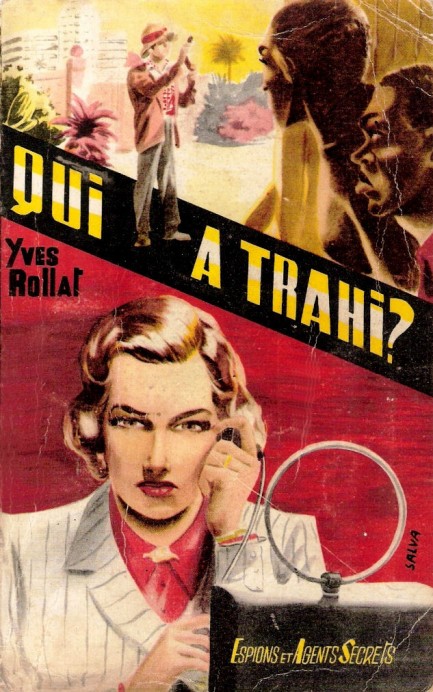
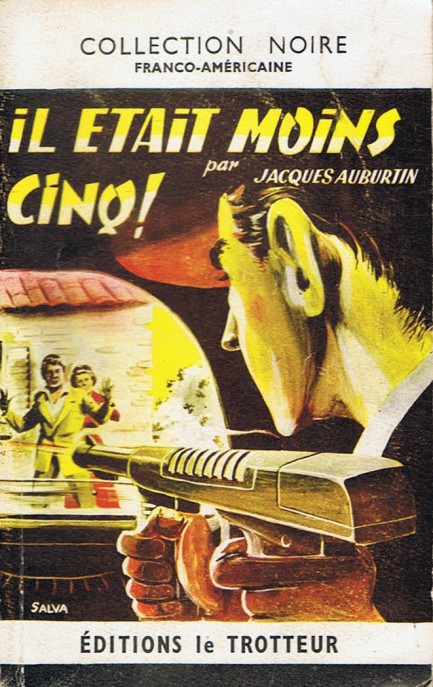
| Vintage Pulp | Nov 22 2020 |

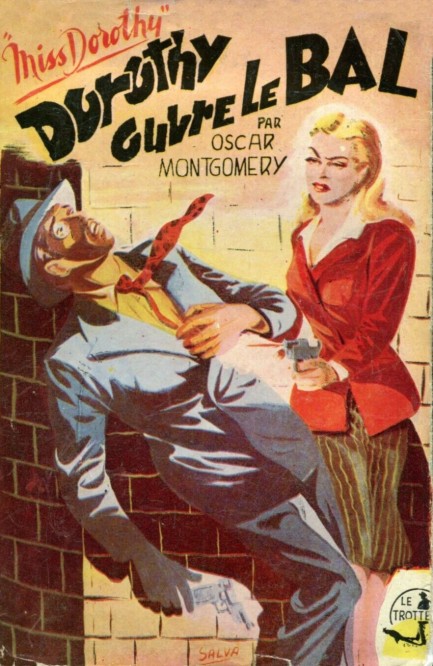
It's been a couple of years since we had a cover by French illustrator Jean Salvetti, so here's one for Dorothy ouvre le bal, or “Dorothy opens the ball,” published in 1952 by Paris based Éditions le Trotteur and written by Oscar Montgomery, aka José del Valle. There were three books in the Dorothy series, with this one coming first. Short synopsis: Dorothy goes to Egypt, hurts a bunch of bad men. As you can see, Salvetti signed his work Salva. More Salva here, here and here.
| Vintage Pulp | Aug 17 2018 |

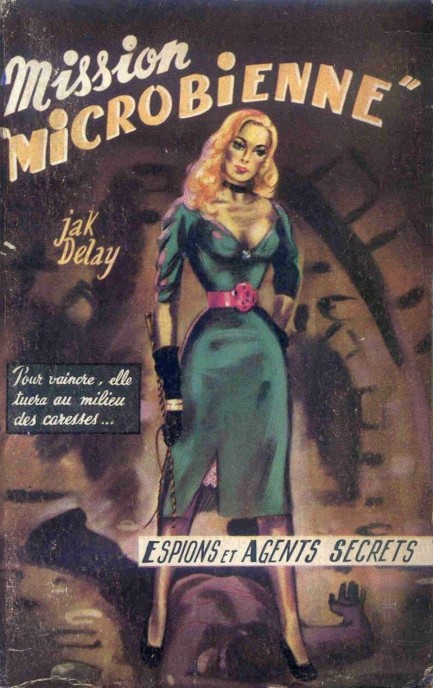
| Vintage Pulp | Apr 16 2018 |

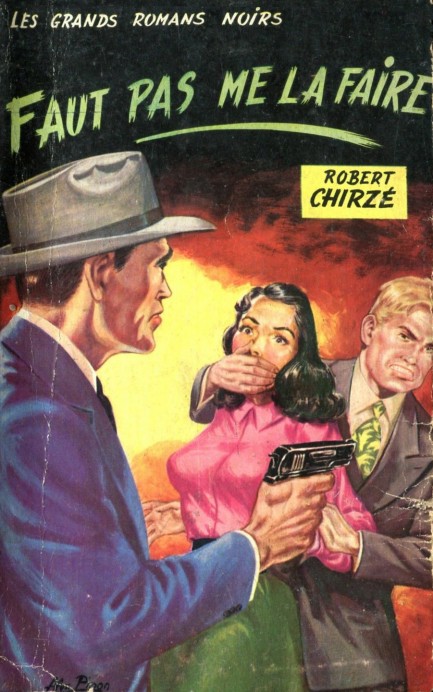
| Vintage Pulp | Feb 2 2018 |

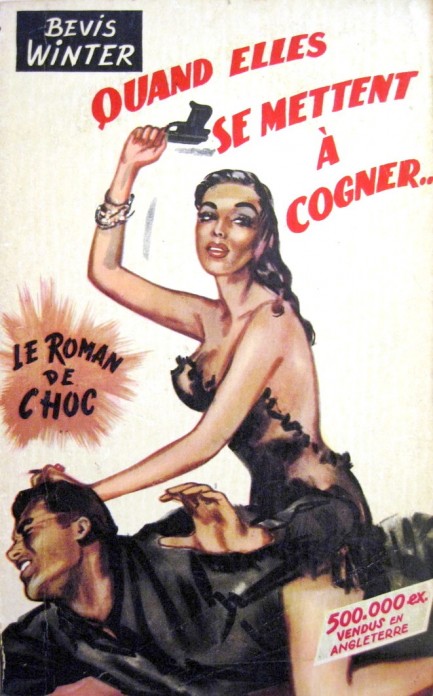
So, after all these years the consensus among experts finally is that cover artist Jacques Thibésart's stylized signature should be read Mik instead of Nik, so we've shared this cover today to call attention to the change we've made to all his previous mentions on Pulp Intl. The man has caused no end of trouble. But he's worth it, because just look at this piece above, with a femme fatale Harveying the living daylights out of a problematic male. This fronts Bevis Winter's Quand elles se mettent à cogner... which was published by Éditions Le Trotteur in 1953 for its series Le Roman de Choc, or Shock Novel. Winter was an English author active during the 1950s who published as Hyman Zoré, Al Bocca, Gordon Shayne, Peter Cagney, and other pseudonyms. It's possible—but not certain—that Quand elles se mettent à cogner... is actually a translation of Larry O'Brien's 1950 thriller Angels Bruise Easy. But don't quote us on that, because French mid-century popular literature is a constant mystery and not even the experts seem able to unravel it.
| Vintage Pulp | Dec 16 2017 |

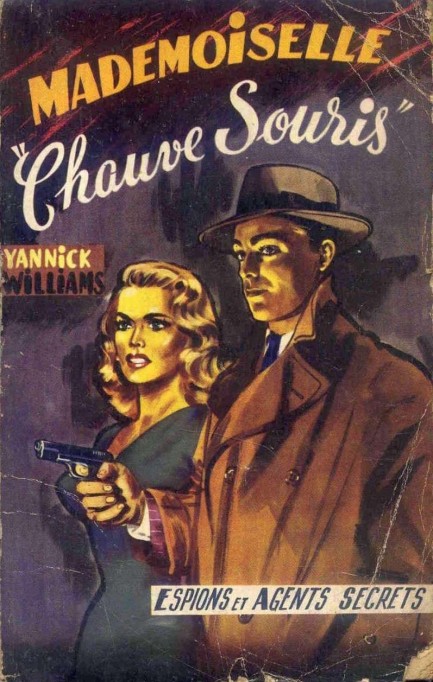
This beautiful cover was painted for Éditions le Trotteur's popular collection Espions et Agents Secrets by Nik, aka Jacques Thibésart, and illustrates Yannick Williams', aka Jacques-Henri Juillet's 1953 thriller Mademoiselle “Chauve Souris”, aka Miss “Bat”. That's a lot of aka's, and here comes one more. In French souris means “mouse,” chauve means bald, and the two words together mean “bat”—literally “bald mouse.” French paperback titles can get a little slangy, though. Souris by itself—a mouse—is also a word for a pretty woman. So there could be another aka happening here in the form of a pun. We don't know. Jo, where are you? We need you on this one.
Oh, and there's one more thing, also aka related. Thibésart has an unusual signature—not visible on this cover but viewable here—in which the “N” could be read as a stylized “M.” Just lately, online experts are beginning to wonder if his signature should be read “Mik” instead of “Nik.” Thibésart is still around, but in classic French fashion refuses to discuss any of this despite several queries being floated his way. So for now we'll stick with Nik. Also, we don't want to change all our previous posts on this guy. We will update later if needed.
Update: it was needed.
| Vintage Pulp | Jan 28 2016 |

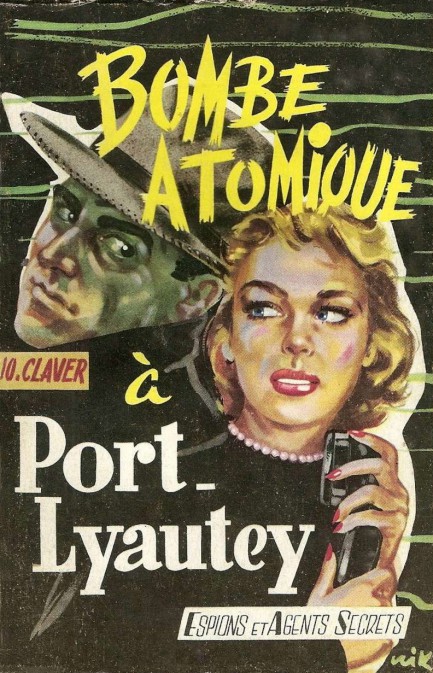
Above, top notch cover art by Jacques Thibésart, aka Mik, for Jo Claver’s Bombe atomique à Port-Lyautey, which was published by Éditions Le Globe and Éditions Le Trotteur in 1956. Claver was aka Georges Claver-Peyre, and this particular book is Cold War intrigue and romance set in Morocco. See more fine Thibésart here and here.





































































